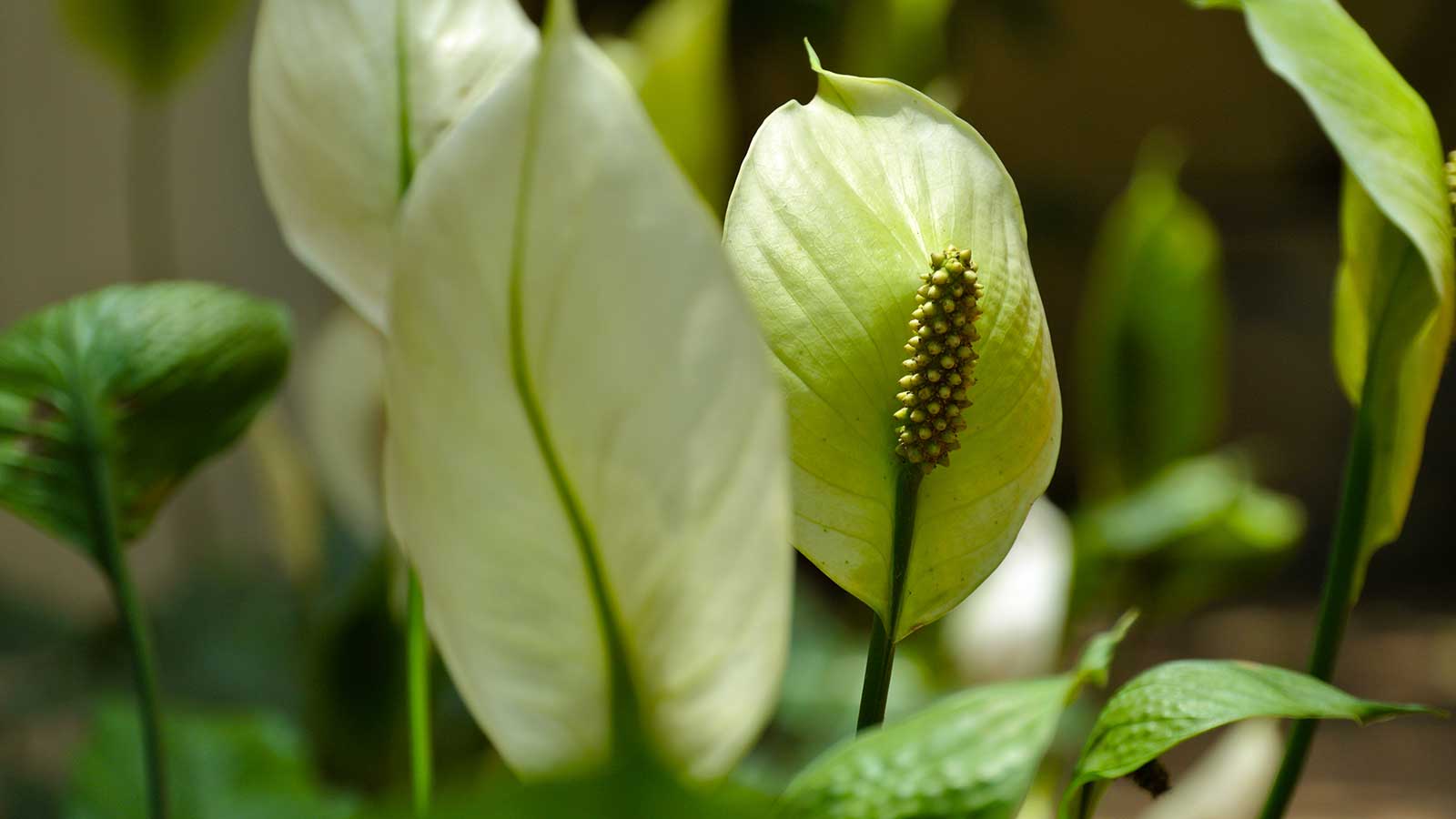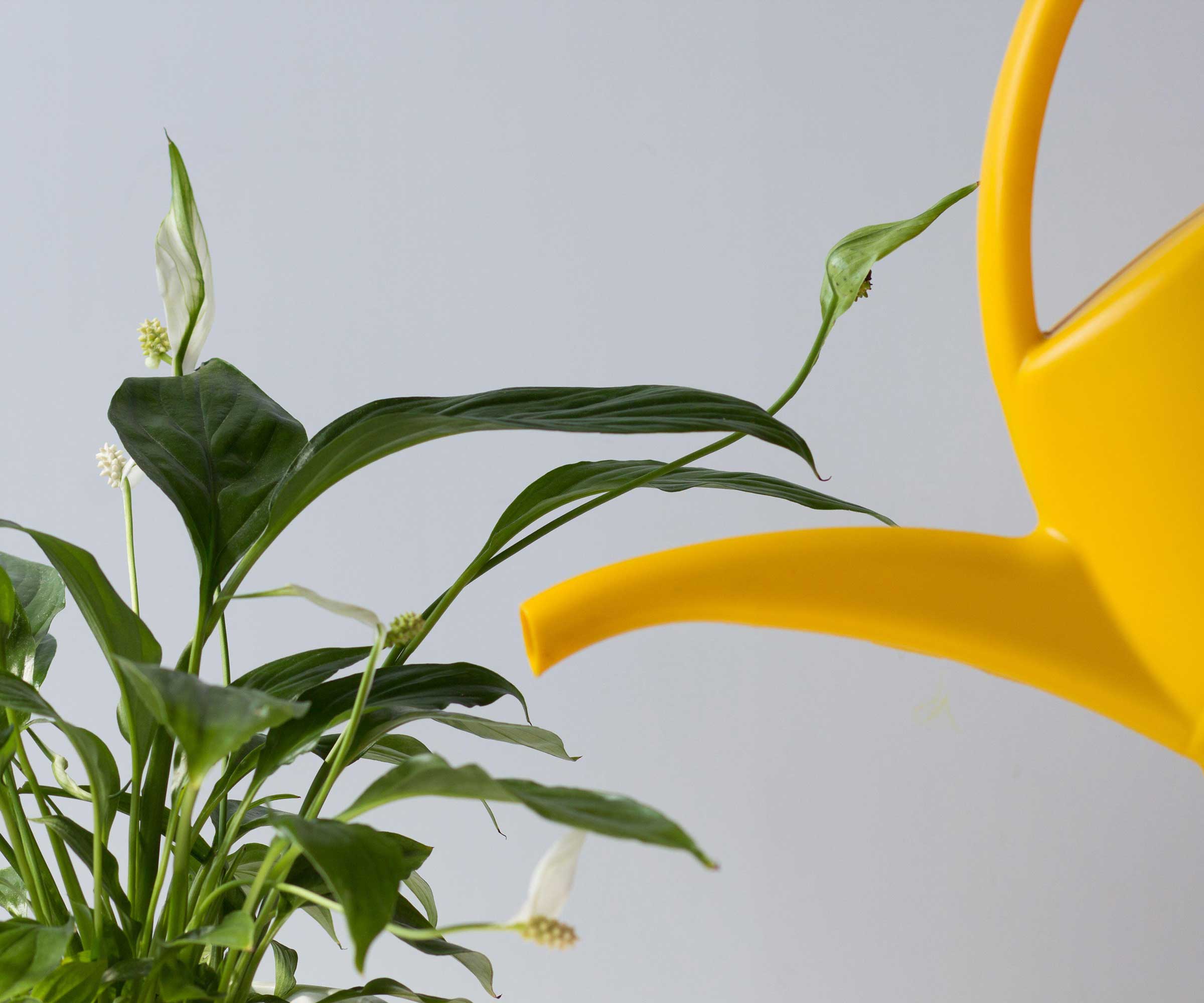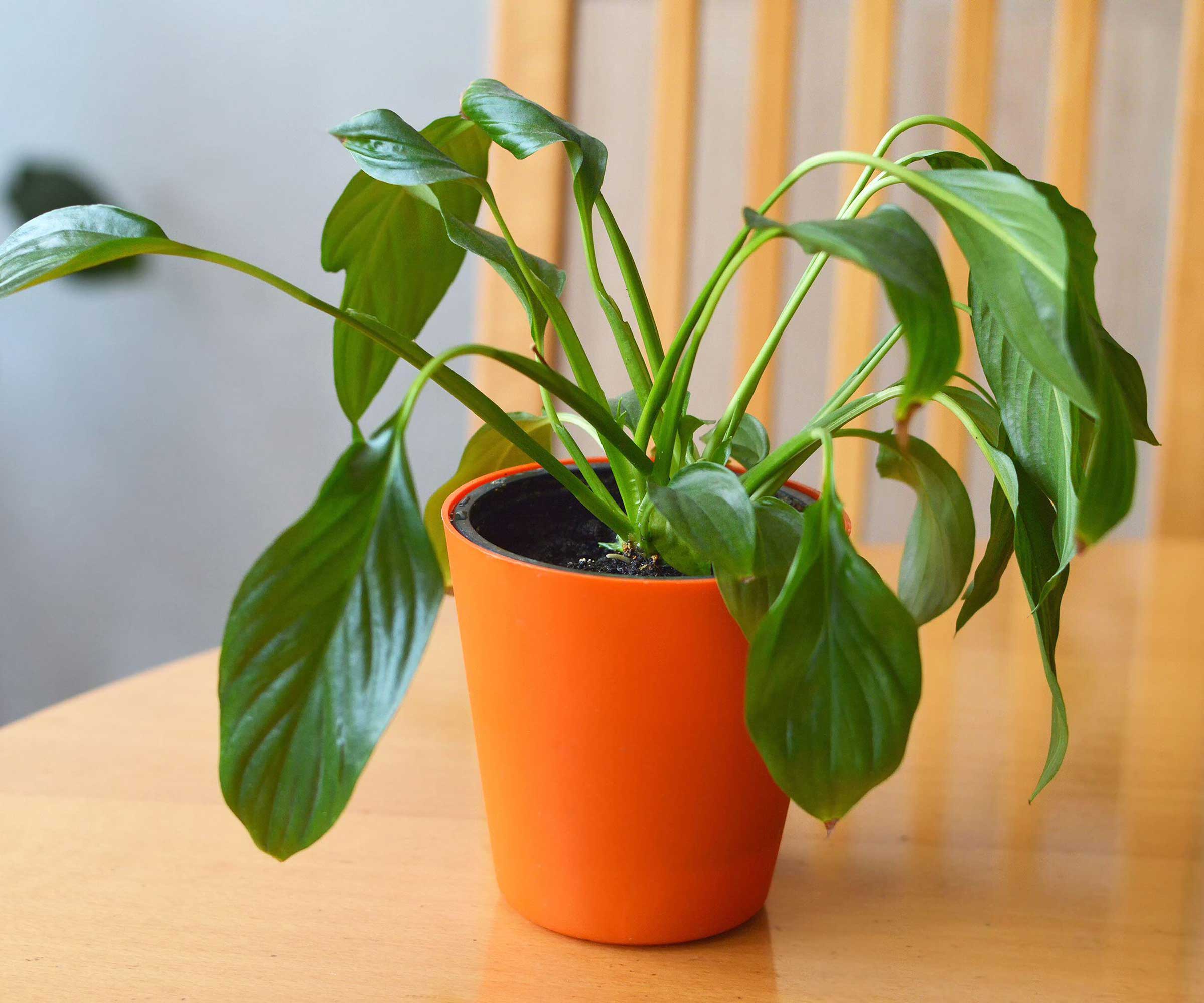Why is my peace lily drooping? The houseplant experts share their advice
Is your peace lily drooping because it's about to die? Or is there a quick fix? This is what plant experts say to do


It's worth knowing that there could be myriad reasons behind a peace lily drooping. They're a popular houseplant, and generally easy to care for, but this problem is more common than you might expect.
When caring for your peace lily, providing the right environment is crucial. The wrong humidity, lighting and water levels can all play a part in causing these plants to wilt.
But if you've noticed your own plant drooping, the good news is there may still be hope for it yet. The experts explain what to do to get it looking happy and healthy again.

Peace lilies are a great houseplant for beginners, but they can start to droop if conditions aren't right
5 reasons behind a peace lily drooping
Peace lilies are one of the best indoor plants, so if yours is drooping, don't give up on it just yet – try these tips first.
1. Too much or too little water
Knowing when to water indoor plants is crucial to keep them in top condition. 'If your peace lily is wilting, you most likely need to water the plant as this is a sign of dehydration. However, if the plant is drooping and its leaves are yellow, hold back on the watering as your plant has been overwatered and needs a break,' says Samantha Jones, a gardening and plant expert at My Job Quote.
'Under or over-watering your peace lily is a common culprit when it comes to drooping,' says James Williams, a gardening expert at Rezigo. 'You should only water once the top 50% of your potting mix has become completely dry – and then only sparingly, as this is an extremely resilient plant that doesn’t need a huge amount of water to thrive and survive.'
'Peace lilies like well-drained soil, so too much water will quickly lead to an unhappy plant,' says Claire Bishop, Senior Houseplant Buyer of Dobbies Garden Centres. 'Your peace lily should be watered weekly, but make sure to check that the soil is dry before you water.'
If watering is the issue, there are steps you can take to revive your drooping peace lily. 'If you have over-watered your peace lily, let it partially dry out before watering again,' says Claire. 'You will be able to tell if you have over-watered your plant because the compost will be wet to the touch and the plant will be heavy.'
If you have under-watered your peace lily, the plant is likely to be light in weight and the top layer of compost will feel dry. If this is the case, give it a good water, allowing the excess to drain away.

Avoid under or over-watering your peace lily
2. The wrong light levels
'Peace lilies also thrive in a bright spot, but don’t react well to direct sunlight which can harm their leaves and cause the plant to droop,' says Claire Bishop.
'Peace lilies prefer bright but indirect light and too much or too little can cause the drooping that you’re seeing. The best location for your lily is in an east-facing window for the perfect amount of light,' agrees James Williams.
3. An unsuitable room temperature
'The peace lily is a tropical plant that enjoys a climate that is somewhat warmer than our own. To prevent drooping, try to keep your home’s temperature between 60-70°F, while keeping it away from drafts,' says James Williams.
'I placed my peace lily near a drafty fireplace in winter and it immediately drooped,' agrees Holly Crossley, a gardening expert at Homes & Gardens. 'Moving it to a spot where the temperature was warmer soon revived it. I would avoid placing them near sources of heat, such as radiators, though – a stable temperature is generally best for houseplants, plus doing so would decrease the humidity levels which these plants love.'

A former professional gardener and allotment-grower, Holly now flexes her green fingers by tending to her large collection of houseplants. Peace lilies are one of her favorites for their easy-care nature – she currently has three, including a variegated variety.
4. Not enough humidity
'The peace lily also enjoys humidity and so the use of a humidifier or regular misting can help to prevent drooping,' says James Williams.
'Another way to increase humidity is to cluster different houseplants closer together, or to put them on trays of wet gravel,' adds Holly. 'Alternatively, put your peace lily somewhere that is naturally humid, such as a kitchen or bathroom. I have one as a kitchen houseplant that's doing particularly well.'

These plants like a humid environment
5. Houseplant pests
If your peace lily has drooped, keep an eye out for houseplant pests, which may be the culprit.
'Spider mites and mealybugs love a bit of peace lily sap and, if these pests get into your home, they can quickly drain your lily of fluid, leaving it looking yellow and droopy. Keep an eye out for infestations in nooks and crannies in order to keep your plant healthy,' says James Williams.
FAQS
Why is my peace lily drooping even after following the tips above?
'Plants naturally go dormant from September through to March so even if you are taking good care of your peace lily, it may not flower during this time,' says Claire Bishop, Senior Houseplant Buyer of Dobbies Garden Centres. 'If this is the case, reduce watering and do not feed it. Then, once March arrives, move the plant to a brighter spot and feed it to encourage new growth.'
'However, some yellowing and browning of the foliage is inevitable as old growth is replaced by new,' says Holly Crossley, a garden expert at Homes & Gardens. 'If you're caring for it properly, this is nothing to worry about – all you need to do is prune your peace lily to improve its appearance.'
Why has my droopy peace lily's roots come away from the soil?
'If your peace lily’s roots are coming out of the bottom of the pot, it will need to be repotted. The ideal time to do this is either September or March, and when doing so, you should use a good quality peat-free compost for houseplants,' says Claire Bishop, Senior Houseplant Buyer at Dobbies Garden Centres.
Sign up to the Homes & Gardens newsletter
Design expertise in your inbox – from inspiring decorating ideas and beautiful celebrity homes to practical gardening advice and shopping round-ups.

Lucy Searle has written about interiors, property and gardens since 1990, working her way around the interiors departments of women's magazines before switching to interiors-only titles in the mid-nineties. She was Associate Editor on Ideal Home, and Launch Editor of 4Homes magazine, before moving into digital in 2007, launching Channel 4's flagship website, Channel4.com/4homes. In 2018, Lucy took on the role of Global Editor in Chief for Realhomes.com, taking the site from a small magazine add-on to a global success. She was asked to repeat that success at Homes & Gardens, where she has also taken on the editorship of the magazine.
-
 ‘It leads to more headaches than it's worth’ – 4 reasons you should never store things in your oven, including fire risks and serious illness
‘It leads to more headaches than it's worth’ – 4 reasons you should never store things in your oven, including fire risks and serious illnessYour oven is for cooking, and cooking only, experts urge
By Chiana Dickson
-
 Urban gardening ideas – 7 creative ways to grow in small spaces, balconies, containers, indoors, and more
Urban gardening ideas – 7 creative ways to grow in small spaces, balconies, containers, indoors, and moreMake the most of your space with these innovative ways to garden
By Tenielle Jordison